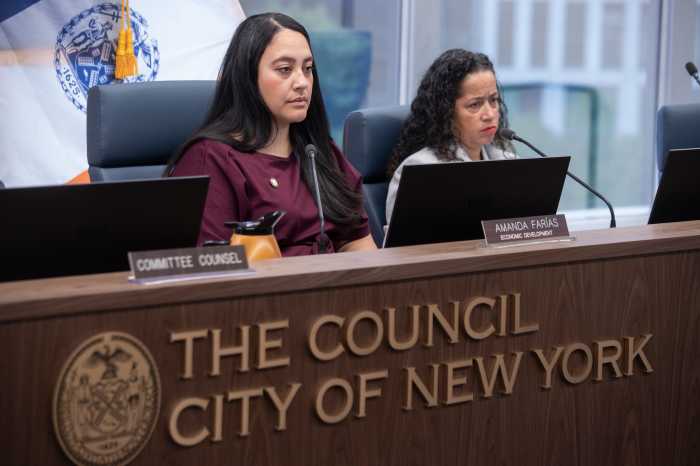Frédéric Lodéon in Nicolas Philibert’s “La Maison de a Radio.” | KINO LORBER
For most people, documentaries are cultural vegetables — unless they’re directed by Michael Moore or feature cute penguins. They’re more akin to reading the Sunday New York Times than to watching a sitcom. Documentary filmmakers seem to have realized this; recent films like “Dirty Wars” and “Blackfish” are juiced up with slick storytelling techniques, not always to their benefit. French director Nicolas Philibert is more successful at entertaining his audience with “La Maison de la radio.” In the past, I’ve found Philibert’s documentaries tepid and shallow, although I must admit I haven’t seen most of his filmography. “La Maison de la radio” is the first one I’ve fully enjoyed, largely because it plays like a workplace comedy and backstage musical.
“La Maison de la radio” centers on Radio France, a rough French equivalent to NPR. The film strings together its wildly eclectic programming, which includes the usual news reports and talk shows but also encompasses interviews with writers and a wide variety of musical programs. Shot over a six-month period in 2011, “La Maison de la radio” is structured to simulate a day in the life of Radio France from morning to evening. As that day progresses, news stories develop.
Nicholas Philibert examines the spectacle of Radio France
In both its strengths and flaws, “La Maison de la radio” reveals a lot about the modern media. I think it’s to the film’s credit that even its lapses say something. Its opening is a demonstration of media overload, as Philibert creates a video and audio montage of brief snippets from Radio France. The result is sheer chaos, signifying nothing. The rest of the film is far mellower.
Throughout, Philibert maintains a fast pace. He rarely holds a scene for longer than two minutes. If his film superficially resembles Frederick Wiseman’s observational documentaries, it parts ways here, as Wiseman often uses long takes and shows remarkable patience (as well as demanding that his spectator sit through lengthy running times — his latest, “At Berkeley,” is almost four hours long.) Undeniably, the film has a soundbite sensibility. Most of the time, this doesn’t hurt it. On a few occasions, it’s infuriating. “La Maison de la radio” includes an interview with novelist Umberto Eco. Just as the Radio France DJ asks him an interesting question about his identification with the characters in his books, Philibert cuts. Philibert eventually returns to the interview, but a later portion.
Formally, the most striking aspect of “La Maison de la radio” is its editing. Philibert creates the illusion that we’re watching a day unfold via the kind of elliptical cutting used during the Eco interview, by which he means to make us aware that we can’t take in everything. He edits his scenes so that two of them often seem to be going on simultaneously, as he cuts between them.
“La Maison de la radio” is filled with music. Some reviews have criticized it for including one scene in which Philibert himself interviews a classical music DJ, whose CD-filled office might qualify him for an episode of “Hoarders: Buried Alive,” but it fits with the film’s general vibe. Philibert films a wide range of performers — choral song, opera, hip-hop, and pop. There were two who stood out for me — a lively percussion sextet featuring four marimba players and a piano-accompanied singer who resembles a cross between Jacques Brel and Nick Cave.
Making a documentary filled with music is hardly unusual — this year’s most popular documentary, “Twenty Feet From Stardom,” is about singers — but Philibert frames the origins of his film in a slightly different manner. He says that “La Maison de la radio” began with “the idea of filming voices.” As filmmaking progressed, Philibert admitted, “ I preferred seemingly more trivial but cinematic criteria — faces, looks, intonations, the fluidity or pitfalls of a word, the tone and the sensuality of a voice, the body that carries it, the accent of a guest, the gestures of a programme host, the atmosphere of a studio… In short, I often relied more on the ‘presence’ of different people than on what they were saying.”
One of the film’s most ironic scenes is a brief interview with a man whose hobby is following thunderstorms. At first, the man reveals very little information about himself — declining to give his name, for example — but gradually, the Radio France presenter gets him to talk more and more, prodding him to state that he’s a doctor. Reticent in comments on the radio, he has nonetheless consented to appear on film, a far more invasive medium. Philibert’s film isn’t a critique of Radio France or an investigation of the politics behind such paradoxical responses. Even so, it deserves credit for opening up spaces for the spectator to wonder about them.





































